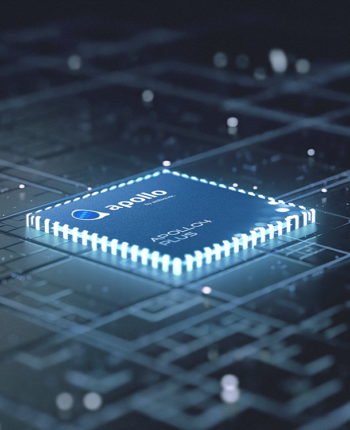5 Simple Techniques For Ambiq apollo3
5 Simple Techniques For Ambiq apollo3
Blog Article

This serious-time model analyzes the signal from an individual-lead ECG sensor to classify beats and detect irregular heartbeats ('AFIB arrhythmia'). The model is developed to be able to detect other kinds of anomalies such as atrial flutter, and can be continually extended and improved.
Individualized overall health checking is now ubiquitous Using the development of AI models, spanning medical-quality remote client monitoring to professional-grade health and Health and fitness applications. Most major purchaser products provide equivalent electrocardiograms (ECG) for typical forms of coronary heart arrhythmia.
additional Prompt: The digital camera follows at the rear of a white classic SUV that has a black roof rack since it hastens a steep Dust street surrounded by pine trees over a steep mountain slope, dust kicks up from it’s tires, the sunlight shines on the SUV as it speeds alongside the Grime street, casting a warm glow about the scene. The dirt road curves Carefully into the gap, without having other vehicles or automobiles in sight.
This write-up describes 4 assignments that share a common concept of enhancing or using generative models, a branch of unsupervised learning approaches in equipment learning.
Apollo510, based upon Arm Cortex-M55, delivers 30x superior power efficiency and 10x speedier general performance in comparison to previous generations
Inference scripts to test the ensuing model and conversion scripts that export it into something which might be deployed on Ambiq's hardware platforms.
That is exciting—these neural networks are Discovering exactly what the visual entire world seems like! These models ordinarily have only about 100 million parameters, so a network properly trained on ImageNet has to (lossily) compress 200GB of pixel info into 100MB of weights. This incentivizes it to discover essentially the most salient features of the info: for example, it can likely discover that pixels close by are likely to have the similar coloration, or that the whole world is produced up of horizontal or vertical edges, or blobs of various colors.
more Prompt: 3D animation of a little, round, fluffy creature with large, expressive eyes explores a vivid, enchanted forest. The creature, a whimsical combination of a rabbit plus a squirrel, has tender blue fur and also a bushy, striped tail. It hops together a glowing stream, its eyes huge with ponder. The forest is alive with magical factors: bouquets that glow and alter colours, trees with leaves in shades of purple and silver, and compact floating lights that resemble fireflies.
Generative models can be a fast advancing area of exploration. As we keep on to progress these models and scale up the coaching plus Cool wearable tech the datasets, we will count on to finally create samples that depict solely plausible photos or films. This might by alone come across use in numerous applications, for instance on-demand produced artwork, or Photoshop++ instructions for instance “make my smile broader”.
Up coming, the model is 'trained' on that knowledge. Finally, the educated model is compressed and deployed into the endpoint gadgets where they will be place to work. Each of these phases needs important development and engineering.
Personal computer vision models help equipment to “see” and sound right of pictures or films. They are really Superb at activities including object recognition, facial recognition, and also detecting anomalies in clinical shots.
extra Prompt: A gorgeously rendered papercraft entire world of the coral reef, rife with vibrant fish and sea creatures.
When optimizing, it is helpful to 'mark' locations of curiosity in your Strength keep track of captures. One way to do this is using GPIO to point on the Vitality keep track of what location the code is executing in.
IoT applications rely greatly on knowledge analytics and authentic-time final decision producing at the lowest latency possible.
Accelerating the Development of Optimized AI Features with Ambiq’s neuralSPOT
Ambiq’s neuralSPOT® is an open-source AI developer-focused SDK designed for our latest Apollo4 Plus system-on-chip (SoC) family. neuralSPOT provides an on-ramp to the rapid development of AI features for our customers’ AI applications and products. Included with neuralSPOT are Ambiq-optimized libraries, tools, and examples to help jumpstart AI-focused applications.
UNDERSTANDING NEURALSPOT VIA THE BASIC TENSORFLOW EXAMPLE
Often, the best way to ramp up on a new software library is through a comprehensive example – this is why neuralSPOt includes basic_tf_stub, an illustrative example that leverages many of neuralSPOT’s features.
In this article, we walk through the example block-by-block, using it as a guide to building AI features using neuralSPOT.
Ambiq's Vice President of Artificial Intelligence, Carlos Morales, went on CNBC Street Signs Asia to discuss the power consumption of AI and trends in endpoint devices.
Since 2010, Ambiq has been a leader in ultra-low power semiconductors that enable endpoint devices with more data-driven and AI-capable features while dropping the energy requirements up to 10X lower. They do this with the patented Subthreshold Power Optimized Technology (SPOT ®) platform.
Computer inferencing is complex, and for endpoint AI to become practical, these devices have to drop from megawatts of power to microwatts. This is where Ambiq has the power to change industries such as healthcare, agriculture, and Industrial IoT.
Ambiq Designs Low-Power for Next Gen Endpoint Devices
Ambiq’s VP of Architecture and Product Planning, Dan Cermak, joins the ipXchange team at CES to discuss how manufacturers can improve their products with ultra-low power. As technology becomes more sophisticated, energy consumption continues to grow. Here Dan outlines how Ambiq stays ahead of the curve by planning for energy requirements 5 years in advance.
Ambiq’s VP of Architecture and Product Planning at Embedded World 2024
Ambiq specializes in ultra-low-power SoC's designed to make intelligent battery-powered endpoint solutions a reality. These days, just about every endpoint device incorporates AI features, including anomaly detection, speech-driven user interfaces, audio event detection and classification, and health monitoring.
Ambiq's ultra low power, high-performance platforms are ideal for implementing this class of AI features, and we at Ambiq are dedicated to making implementation as easy as possible by offering open-source developer-centric toolkits, software libraries, and reference models to accelerate AI feature development.

NEURALSPOT - BECAUSE AI IS HARD ENOUGH
neuralSPOT is an AI developer-focused SDK in the true sense of the word: it includes everything you need to get your AI model onto Ambiq’s platform. You’ll find libraries for talking to sensors, managing SoC peripherals, and controlling power and memory configurations, along with tools for easily debugging your model from your laptop or PC, and examples that tie it all together.
Facebook | Linkedin | Twitter | YouTube Report this page